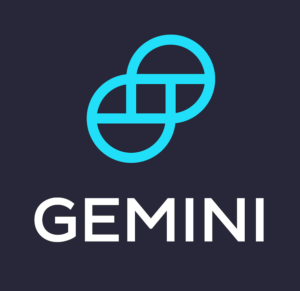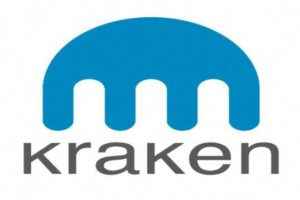The cryptocurrency market has evolved far beyond simple buying and holding. Today’s investors can earn substantial passive income through various platforms offering interest rates that often exceed traditional banking by significant margins. With some platforms providing triple-digit annual percentage yields on popular cryptocurrencies, the opportunity to grow digital assets has never been more accessible.
From centralized exchanges offering straightforward savings accounts to decentralized finance (DeFi) protocols featuring yield farming and liquidity provision, the options for earning interest on crypto have expanded dramatically. Whether through staking on proof-of-stake networks, lending assets to borrowers, or providing liquidity to trading pools, investors can choose strategies that match their risk tolerance and technical expertise.
Finding the right platform requires understanding the different mechanisms available and evaluating factors like security, returns, and ease of use. This guide explores the best places to earn interest on cryptocurrency holdings.
Top Platforms & Saving Accounts for Earning Crypto Interest in January 2026
Centralized platforms offer regulated environments with user-friendly interfaces that make earning interest on crypto accessible to mainstream investors. These platforms combine traditional financial security measures with cryptocurrency innovation to provide stable yield opportunities.
Nexo

Bybit

Bybit is a rapidly growing cryptocurrency exchange founded in 2018, known for its user-friendly platform and innovative trading tools. It serves over 60 million users globally and has established itself as a leading exchange, ranking second in trading volume, liquidity, and traffic. With a strong emphasis on Web3 and decentralized finance (DeFi), Bybit has expanded its offerings to meet the diverse needs of both active traders and passive investors.
Key Features of Bybit:
-
Diverse Trading Products:
-
Spot Trading: Simple buy and sell orders for over 650 cryptocurrencies.
-
Derivatives: High-leverage options (up to 50x) for futures and margin trading.
-
Options: European-style cash-settled options for both call and put orders.
-
P2P Trading: Fee-free, peer-to-peer crypto trading with high security.
-
Bybit Convert: Instantly convert between hundreds of cryptocurrencies with no fees.
-
-
Bybit Earn (Passive Income Focus):
-
Flexible Savings: Deposit popular assets like BTC, ETH, and USDT to earn daily interest. Users can withdraw their funds anytime while earning competitive rates (e.g., 2.5% APR for BTC, 10.15% APR for USDT).
-
Fixed-Term Savings: Lock up assets for higher interest rates (up to 7% APR on ETH in past promotions) for a specific term.
-
Liquidity Mining: Participate in liquidity pools and earn rewards by providing liquidity to the platform.
-
ETH 2.0 Liquid Staking: Stake ETH 2.0 tokens with flexibility and earn rewards as part of Ethereum’s upgrade process.
-
Dual Asset Investment: A unique feature that lets you invest in two assets at once, with the potential to earn higher returns based on market performance.
-
Wealth Management: A suite of professional portfolio strategies designed for long-term growth and optimized risk management.
-
-
Web3 and Decentralization:
Bybit has integrated with leading blockchain protocols to help drive on-chain innovation, positioning itself as a Web3 hub. The exchange has also onboarded millions of users to its Bybit Wallet, which simplifies the process of engaging with decentralized finance (DeFi) projects.
Pros:
-
Low Fees: Bybit offers some of the most competitive fees in the industry, including 0.1% maker/taker fees for trading, making it attractive for frequent traders.
-
High Leverage: Up to 100x leverage for derivatives traders, offering significant profit potential.
-
Robust Trading Tools: Advanced trading features, including TradingView and MetaTrader4 integrations, cater to both beginner and experienced traders.
-
Extensive Passive Income Options: With features like Flexible Savings, Fixed-Term Savings, and Liquidity Mining, users have multiple ways to earn passive income on their crypto holdings.
-
User-Friendly Interface: The platform’s clean, intuitive design makes it easy to navigate, even for those new to crypto.
-
P2P Trading: Fee-free and secure peer-to-peer trading for users who prefer to trade without third-party involvement.
Cons:
-
No Insurance on Deposits: Unlike some other exchanges, Bybit does not provide insurance on user deposits, which could be a risk for more cautious investors.
-
Unlicensed in Many Regions: Bybit operates without formal licenses in certain countries, which may concern users who prioritize regulatory oversight.
-
Lack of Free Deposit Options: Users will face fees for deposits, which could be a downside for those looking to minimize additional costs.
-
Complex for Beginners: The range of tools and features, while appealing to advanced traders, can be overwhelming for beginners who may struggle to navigate the platform effectively.
-
Limited Customer Support: Some users have reported poor customer service, which can be frustrating for those needing quick resolution to issues.
Bybit Earn is designed for users who want to grow their crypto holdings passively. The platform provides several products that allow users to earn interest or rewards on their assets without actively trading:
-
Flexible Savings allows for instant withdrawals while earning competitive interest on assets like BTC, ETH, and USDT. This feature suits users who want to keep their funds liquid but still generate passive income.
-
Fixed-Term Savings offers higher interest rates for locking assets in for a predetermined period. This is ideal for users who are willing to sacrifice liquidity for greater returns (such as up to 7% APR on ETH in past promotions).
-
Liquidity Mining rewards users for providing liquidity to specific markets, giving a chance to earn from the transaction fees generated on the platform.
-
ETH 2.0 Liquid Staking lets users stake ETH while maintaining liquidity, earning rewards without locking up their funds.
-
Dual Asset Investment and Wealth Management strategies provide professional-level opportunities for passive income, allowing users to optimize returns based on market conditions.
These flexible and varied earning options make Bybit an appealing choice for users looking to grow their portfolio passively, especially with no management fees on certain services and the ability to earn rewards in real-time.
Bybit stands out as an exchange that caters to both active traders and passive investors. While the platform excels in advanced trading tools, its Bybit Earn functionality is particularly appealing for those looking to generate passive income on their crypto holdings. However, no insurance on deposits and the platform’s lack of regulation in certain regions may be concerns for more risk-averse users. Overall, Bybit offers a strong suite of features for both beginner and advanced users, with a particular emphasis on helping investors grow their assets in a flexible and accessible way.
Binance

Binance Earn provides users with multiple ways to earn interest on their crypto holdings, including Flexible Savings, Locked Savings, DeFi Staking, and more. Binance implements strong security measures to protect users’ assets, with features like the Secure Asset Fund for Users (SAFU), which acts as an emergency insurance fund in case of security breaches or system failures. This means that, in the unlikely event of a platform breach, users’ funds are somewhat protected, offering an added layer of confidence for those looking to earn passive income through Binance Earn.
However, as with any centralized platform, there are factors that users should consider, especially when using Binance Earn for interest generation:
Security Features of Binance Earn:
- SAFU Fund: Binance’s Secure Asset Fund for Users acts as an emergency insurance buffer, ensuring that, in the event of a major security incident, users’ assets within Binance Earn products are protected up to a certain amount.
- Advanced Security Protocols: Binance employs robust security measures including two-factor authentication (2FA), cold storage, and regular security audits, which significantly reduce the risk of asset theft and hacking. This is crucial for users staking or earning interest on their crypto, where funds might be held in locked or flexible products for extended periods.
- Continuous Monitoring: Binance actively monitors suspicious activity and has dedicated security teams to address potential risks. Users also benefit from features like withdrawal whitelist and security alerts, which allow them to maintain tighter control over their assets.
- Despite these security measures, Binance Earn’s centralized nature means that users are ultimately entrusting their assets to the exchange. Any platform vulnerabilities, technical failures, or regulatory challenges could affect the availability of funds, even within secure interest-bearing products.
Regulatory Landscape and Its Impact on Binance Earn Users - Binance’s regulatory status varies significantly across regions, which can affect the availability and features of Binance Earn products for users in different countries. Regulatory scrutiny has led Binance to adjust or even suspend services in some regions, impacting users’ ability to fully take advantage of the Earn offerings.
- Regional Limitations: In some countries, regulatory restrictions prevent access to certain Binance Earn products. For example, users in regions with stricter financial regulations may be unable to access DeFi staking or fixed-term investment products, limiting their ability to earn interest.
- Potential for Service Disruptions: As regulatory pressures evolve, some Binance Earn products may become unavailable in certain jurisdictions, or Binance may alter terms to comply with new rules. This could include changes to the available APRs or even the removal of specific products entirely.
- Tax and Compliance Concerns: In regions where Binance faces regulatory challenges, users may encounter complicated tax implications related to earnings from Binance Earn products. It’s crucial for users to stay informed about how their country’s tax authority views cryptocurrency interest income to ensure they comply with local laws.
Pros:
- Strong Security Measures: Binance Earn benefits from Binance’s robust security architecture, including the SAFU fund and industry-standard protocols like 2FA and cold storage. This provides a layer of protection for users looking to earn interest on their crypto assets without having to manage the intricacies of decentralized platforms.
- Range of Products for Earning Interest: Binance offers a variety of products under Binance Earn (Flexible Savings, Locked Savings, and DeFi Staking) with different risk profiles, allowing users to pick what fits their investment goals and liquidity needs. Whether you prefer flexible access to funds or are looking for higher interest with a locked commitment, there’s something for everyone.
- Compound Earnings: With Binance Earn, interest is paid out daily and automatically reinvested (in most cases), allowing users to compound their earnings. This is a huge benefit for users who want to maximize their returns over time without constant monitoring.
- User-Friendly Platform: Binance Earn’s platform is easy to use, with simple navigation and clear APR information for different products. Users don’t need to be crypto experts to start earning passive income.
Cons:
- Regulatory Restrictions: Binance Earn products might not be available in certain regions due to local regulations. This can prevent users in specific countries from accessing DeFi staking or dual investment products, which offer higher potential returns. The changing regulatory landscape may also lead to sudden product suspensions or modifications.
- Centralized Risk: As a centralized exchange, Binance carries the risk of platform failure. Users are entrusting their funds to Binance, which could expose them to potential security breaches, regulatory crackdowns, or insolvency issues. While Binance offers security measures, the risks associated with centralization remain.
- Complexity of Advanced Products: Binance Earn includes advanced financial products like Dual Investment and Range Bound strategies. These may not be suitable for novice users and can introduce higher risk, especially if users are unfamiliar with crypto options trading. Understanding the terms and risks of these products is essential to avoid potential losses.
- Withdrawal Delays in High Volatility: In extreme market conditions, withdrawals from locked products or DeFi staking may face delays. While most products in Binance Earn are easily accessible, users with locked funds could experience issues if Binance is overwhelmed by requests during times of high network congestion.
Coinbase

Coinbase has emerged as one of the leading platforms for crypto staking, offering a simplified process for users to earn passive income from their digital assets. By leveraging Proof of Stake (PoS) protocols, Coinbase enables users to stake popular cryptocurrencies like Ethereum (ETH), Solana (SOL), Cardano (ADA), and others directly from their accounts. This allows users to participate in blockchain validation while earning staking rewards without needing advanced technical knowledge or a self-custody wallet.
How Coinbase Staking Works
Staking on Coinbase is straightforward, making it an excellent choice for crypto beginners. Users can stake as little as $1 in selected cryptocurrencies, making it highly accessible compared to other platforms that often have higher minimum staking requirements. Rewards are generated by locking your crypto in the platform’s custodial wallet, where it contributes to securing the network. In return, Coinbase shares staking rewards with its users, though the platform retains a portion as a commission—usually around 25%.
One of Coinbase’s standout features is its user-friendly interface, allowing even novice users to easily stake and monitor their crypto earnings through both the web and mobile apps. Coinbase One subscribers benefit from slightly reduced staking fees, providing them with higher yields on certain assets like ADA, ATOM, and SOL.
Coinbase Staking Rewards and Fees
-
Supported Cryptos: Coinbase currently supports staking for seven assets, including Ethereum (ETH), Solana (SOL), Cardano (ADA), and more.
-
Annual Percentage Yields (APY): Yields for popular assets range from 2%–7%, depending on the cryptocurrency. For example, Ethereum staking offers approximately 2.23% APY, while Solana can yield up to 7.05%.
-
Staking Commission: Coinbase takes a 25% cut of the staking rewards, which is higher than many competitors. However, Coinbase One members receive a lower commission, increasing overall returns.
Pros:
-
Ease of Use: With a simple staking process, Coinbase allows users to stake directly from the platform without complex wallet setups or understanding intricate staking contracts.
-
Transparency: Coinbase offers clear explanations about how staking rewards are generated and distributed, helping users understand the returns on their investments.
-
Regulated Platform: As a publicly traded company, Coinbase operates under strict regulations, adding an extra layer of security and trust for users, especially those new to the crypto space.
-
Lower Minimum Staking Requirement: Unlike Ethereum’s traditional 32 ETH validator requirement, Coinbase allows users to stake small amounts of assets, as low as $1, making it more accessible.
Cons:
-
High Fees: At 25%, Coinbase’s staking commission is significantly higher than competitors like Kraken (15%) or Binance (varies). This fee structure could make Coinbase less attractive for those looking to maximize their staking returns.
-
Limited Crypto Selection: Coinbase supports staking for only seven assets, whereas platforms like Binance offer a broader range of staking opportunities across many more cryptocurrencies.
-
Geographic Restrictions: Staking on Coinbase is not available in certain U.S. states, including California, New Jersey, and New York, which can limit access for some users.
-
Locked Staking: Many of the staked assets are locked, meaning you may face liquidity risks if you need to access your funds quickly. Additionally, unstaking can take several days, exposing you to price volatility during that period.
Is Coinbase Staking Right for You?
Coinbase staking offers a beginner-friendly, secure, and transparent way for users to earn passive income from their crypto holdings. While its high staking fees and limited crypto options might deter more advanced users, it remains a strong choice for those new to the space or seeking simplicity without sacrificing security. If you’re looking for clear yields and easy-to-understand processes, Coinbase is hard to beat. However, if higher returns or more flexibility are important to you, platforms like Kraken or Binance might offer better alternatives.
In conclusion, Coinbase remains a solid option for those prioritizing ease of use, security, and regulated operations but may not be the best platform for maximizing staking rewards.
YouHodler

Gemini

Gemini, founded in 2014 by Tyler and Cameron Winklevoss, has established itself as a major player in the cryptocurrency space. Based in New York and licensed as a regulated trust company, Gemini stands out for its focus on security, user experience, and compliance. The platform provides a wide range of tools and features for both new and experienced traders, including the possibility to earn interest on cryptocurrency holdings.
Key Features
-
Earn Program: One of Gemini’s standout features is its Earn program, which allows users to earn interest on their cryptocurrency holdings. Supported assets such as Bitcoin (BTC), Ethereum (ETH), and several other popular coins can yield competitive returns. The program provides a simple, straightforward way to generate passive income without needing to actively trade.
-
ActiveTrader: For more experienced traders, Gemini offers ActiveTrader, a specialized interface packed with advanced charting tools, multiple order types, and high-speed execution. This feature enhances the trading experience by offering precise control and deep market insights.
-
Mobile Trading: Gemini’s mobile app provides the flexibility to trade and earn interest on crypto wherever you are. It supports a user-friendly experience on both iOS and Android, ensuring that users can access their accounts, manage their portfolios, and track their earnings on the go.
-
Comprehensive Security: Gemini takes security seriously with SOC 1 Type 2 and SOC 2 Type 2 certifications, ensuring the platform adheres to rigorous security and operational standards. With full-reserve backing, all assets held on the exchange are 100% backed 1:1, and users can enhance their account security using two-factor authentication (2FA) and WebAuthn technology.
-
Competitive Fees: Trading fees on Gemini are relatively low, with a 0.2% maker fee and 0.4% taker fee on the API fee schedule. Moreover, these fees decrease as a trader’s volume increases, making it cost-effective for those who trade frequently.
Pros:
-
Reliable Security: Gemini’s rigorous security measures, including full-reserve backing and insurance for assets stored online, provide users with confidence in the safety of their investments.
-
Global Availability: The platform is available in all 50 U.S. states and over 70 countries, making it accessible to a global user base.
-
Simple UI for Beginners: Gemini’s intuitive user interface makes it easy for newcomers to navigate the platform and get started with cryptocurrency investing and interest earning.
-
Earn Interest on Crypto: With the Earn program, users can grow their crypto holdings passively, which is ideal for long-term investors looking to maximize returns without active trading.
-
No Minimum Deposit: Gemini has no account minimums, allowing anyone to start earning interest or trading with minimal capital.
Cons:
-
UI Aesthetics: While functional, some users feel that Gemini’s user interface lacks the visual polish of other platforms, which may impact the overall experience for those prioritizing design.
-
Limited Cryptocurrency Options for Interest: While Gemini supports 70+ cryptocurrencies, not all of them are eligible for earning interest, limiting the options for more niche coins.
-
Required Authentication: Although Gemini offers strong authentication options like Authy, some users prefer other authenticator apps, which may feel restrictive.
Gemini stands out as a strong platform for both new and experienced cryptocurrency users seeking to earn interest on their digital assets. It offers a secure and user-friendly environment globally, making it an attractive option for generating passive income from crypto investments. While its fees are competitive and its mobile application facilitates convenient trading, some users might desire a broader selection of assets for earning interest or a more visually engaging user interface. Nevertheless, for individuals prioritizing security and ease of use, Gemini remains a leading contender among cryptocurrency exchanges that offer interest-bearing accounts.
Kraken

Crypto.com

Bitget

Bitget, founded in 2018, has quickly emerged as one of the largest and most innovative cryptocurrency exchanges in the market. Offering a wide range of services, including spot trading, futures trading, copy trading, and more, Bitget is known for its user-friendly platform, robust security features, and diverse financial products. A standout feature of Bitget is its Earn functionality, which allows users to grow their crypto assets passively through staking, savings plans, and other yield-generating options.
Key Features of Bitget:
-
Spot & Futures Trading: Bitget provides both spot trading (direct cryptocurrency purchases) and futures trading (contract-based speculative trading) with a wide range of digital assets and up to 125x leverage for advanced traders.
-
Copy Trading: One of the standout features, Bitget’s copy trading functionality allows users to automatically replicate the strategies of professional traders, making it ideal for beginners and those looking to leverage the expertise of experienced investors.
-
Earn Program: Bitget’s Earn program is designed for users who want to earn passive income on their crypto holdings. This program offers various flexible and fixed savings options, competitive interest rates, and low entry barriers. Bitget Earn includes features such as:
-
Flexible Savings: Users can deposit their assets and earn daily interest, with the option to withdraw funds at any time.
-
Fixed Savings: This option locks in crypto assets for a predetermined period in exchange for higher interest rates.
-
Shark Fin: A unique product designed for users seeking a combination of staking rewards and price protection.
-
Dual Investment: Allows users to invest in two different cryptocurrencies and earn a higher return based on their market outlook.
-
-
Security: Bitget emphasizes strong security, offering cold storage, multi-signature wallets, 2FA (Two-Factor Authentication), and a $350 million insurance reserve to protect user funds.
-
Staking & DeFi: Bitget also integrates decentralized finance (DeFi) functionality, allowing users to participate in staking services and yield farming within the Bitget Wallet and access Web3 services.
-
Educational Resources: For new users, Bitget offers tutorials, guides, and an educational academy to help traders learn the ropes and improve their trading skills.
Pros:
-
User-Friendly Interface: The platform is designed to cater to both beginners and experienced traders. With intuitive features and clear navigation, users can easily access the Earn program and start generating passive income.
-
Diverse Earning Options: The Earn program offers multiple investment products, from flexible savings to structured options like Shark Fin and Dual Investment, making it suitable for different risk profiles.
-
High Yields: The interest rates for Bitget Earn are competitive, offering high annual percentage yields (APYs) compared to traditional savings accounts.
-
Security Features: Bitget prioritizes user safety, with industry-standard security measures and insurance protections, ensuring peace of mind when participating in staking or savings products.
-
Wide Range of Supported Cryptos: With over 750 cryptocurrencies available for trading and earning, Bitget offers flexibility for users to earn on a diverse set of digital assets.
Cons:
-
Limited Availability in Some Regions: Bitget is restricted in certain countries, including the United States, Canada (Alberta), Netherlands, Hong Kong, Singapore, and Cuba, limiting access for users in these regions.
-
Complexity for Beginners: While the platform is generally user-friendly, more advanced features like leverage trading and copy trading might be overwhelming for beginners without prior crypto experience.
-
High Risk for Fixed Savings Products: Crypto investments, including Dual Investment and Shark Fin, carry a higher level of risk compared to traditional savings or investments, meaning returns are not guaranteed.
Bitget is a solid option for users looking to not only trade cryptocurrencies but also earn passive income through its Earn functionality. With its diverse savings products, competitive interest rates, and secure platform, it caters to both novice and experienced investors who want to grow their crypto portfolios without actively trading. Whether you’re interested in flexible savings or more structured yield-generating products, Bitget provides a variety of options to help users earn rewards on their holdings. However, due to the risk inherent in cryptocurrency markets, users should approach these products with caution and consider their individual risk tolerance.
Understanding Crypto Interest-Earning Platforms

Crypto interest-earning platforms have revolutionized how investors generate passive income from their digital assets. These platforms operate through various mechanisms that enable users to earn yields significantly higher than traditional savings accounts.
How Crypto Interest Accounts Work
Crypto interest accounts function by utilizing three primary mechanisms to generate returns for depositors. Lending operates similarly to traditional banking – platforms lend deposited cryptocurrencies to institutional borrowers and share the interest earned with depositors. Staking involves contributing assets to proof-of-stake blockchain networks, earning rewards for helping validate transactions. Yield farming through DeFi protocols allows users to provide liquidity to decentralized exchanges and earn fees from trading activities.
Each mechanism offers different risk-reward profiles:
| Mechanism | Typical APY Range | Risk Level | Typical Lockup Period |
|---|---|---|---|
| Lending | 3-12% | Low-Medium | Flexible to 3 months |
| Staking | 5-25% | Medium | 7-90 days |
| Yield Farming | 10-100%+ | High | Usually flexible |
Platforms automatically manage these processes for users. They collect deposits, deploy them across various earning strategies, and distribute returns minus their operational fees. Most platforms offer flexibility in choosing between fixed-term deposits with higher rates or flexible accounts with instant withdrawal options.
CeFi vs. DeFi Platforms
Centralized Finance (CeFi) platforms operate like traditional financial institutions with management teams overseeing operations. They provide customer support, regulatory compliance, and user-friendly interfaces. Users must complete KYC/AML verification and trust the platform with custody of their assets. Examples include established exchanges and dedicated lending platforms.
Decentralized Finance (DeFi) platforms run entirely through smart contracts on blockchains without intermediaries. Users maintain control of their assets through personal wallets and interact directly with protocols. While offering greater transparency and potentially higher yields, they require more technical knowledge and carry smart contract risks.
Key differences between platform types:
- Control: CeFi requires trusting third parties; DeFi allows self-custody
- Access: CeFi may have geographic restrictions; DeFi is globally accessible
- Support: CeFi offers customer service; DeFi relies on community forums
- Complexity: CeFi provides simple interfaces; DeFi requires wallet management
- Insurance: Some CeFi platforms offer asset protection; DeFi typically doesn’t
Interest Rates and Terms
Interest rates on crypto platforms vary dramatically based on several factors. Asset type plays a major role – stablecoins typically offer 5-12% APY while volatile cryptocurrencies range from 2-8%. Market conditions directly impact rates, with periods of high demand driving yields up and bear markets reducing returns.
Platform-specific factors affecting rates include:
- Deposit amount: Larger deposits sometimes qualify for premium rates
- Lock-up periods: Fixed terms of 1-3 months often yield 2-5% more than flexible accounts
- Promotional offers: New platforms frequently offer boosted rates up to 25% for initial deposits
- Platform fees: Some platforms deduct 10-30% of earned interest as service fees
Understanding terms is crucial for maximizing returns. Flexible accounts allow instant withdrawals but offer lower rates. Fixed-term deposits lock funds for specific periods but provide higher yields. Auto-renewal clauses may automatically extend lock-up periods unless manually cancelled. Minimum balance requirements can range from $10 to $1,000 depending on the platform and asset type.
Supported Cryptocurrencies
| Platform | Major Assets | Total Supported | Special Features |
|---|---|---|---|
| Coinbase | BTC, ETH, USDT, USDC | 200+ | Staking rewards on 15+ assets |
| Kraken | BTC, ETH, DOT, ADA | 190+ | On-chain staking for 12 assets |
| Crypto.com | BTC, ETH, CRO, USDT | 250+ | Enhanced rates with CRO staking |
| Binance | BTC, ETH, BNB, USDT | 350+ | Flexible and locked savings options |
Withdrawal Flexibility
Immediate Access Options:
- Coinbase allows instant withdrawals to linked bank accounts and PayPal with no lockup periods for most earning products
- Kraken provides same-day fiat withdrawals and instant crypto transfers with no minimum withdrawal amounts
- Crypto.com offers flexible terms with instant withdrawals though fixed-term deposits yield higher rates
Lockup Considerations:
- Fixed-term products on Crypto.com require 1-3 month commitments but offer rates 2-3x higher than flexible options
- Binance’s locked staking periods range from 10-120 days with early redemption penalties
- Kraken’s staking has unbonding periods that vary by asset (0-28 days for most cryptocurrencies)
- Coinbase maintains no lockup requirements making it ideal for users prioritizing liquidity
Each platform balances security, asset variety, and withdrawal flexibility differently. Coinbase excels for beginners seeking regulatory compliance and easy withdrawals. Kraken offers the best combination of low fees and professional features. Crypto.com rewards loyal users with enhanced rates through CRO staking. Binance provides the widest selection of earning opportunities but requires careful attention to regional availability and withdrawal policies.
Best Decentralized Platforms for Crypto Yields
DeFi platforms have revolutionized passive income generation by eliminating intermediaries and offering direct access to yield-earning opportunities through smart contracts. These platforms typically provide higher returns than centralized alternatives, with APYs ranging from 10% to over 100% for various liquidity pools and yield farming strategies.
Smart Contract Security
Smart contract vulnerabilities represent the primary risk in DeFi yield farming, making security assessment crucial for platform selection. Leading platforms implement multiple security layers to protect user funds:
- Third-party audits: Regular code reviews by firms like CertiK, Quantstamp, and Trail of Bits verify contract integrity
- Multi-signature wallets: Require multiple authorized signatures for critical protocol changes
- Time-locked upgrades: Implement mandatory waiting periods before executing smart contract modifications
- Bug bounty programs: Offer rewards up to $1 million for discovering critical vulnerabilities
- Insurance protocols: Partner with platforms like Nexus Mutual to provide coverage against smart contract failures
Platforms with the strongest security track records maintain transparent audit histories and publish detailed security documentation. Users should verify audit reports before depositing funds and monitor platforms’ incident response histories.
Liquidity Pool Options
Liquidity pools form the backbone of DeFi yield generation, offering diverse risk-reward profiles across different asset pairs. Popular pool categories include:
Stablecoin pairs (USDC/USDT, DAI/USDC):
- APY range: 5-15%
- Lower impermanent loss risk
- Ideal for risk-averse investors
Major token pairs (ETH/USDT, BTC/ETH):
- APY range: 10-30%
- Moderate volatility exposure
- Balance between risk and reward
Volatile pairs (ALT/ETH, MEME/USDT):
- APY range: 50-200%+
- High impermanent loss potential
- Suitable for experienced traders
Multi-chain platforms supporting 20+ blockchains provide access to thousands of pools, enabling portfolio diversification across ecosystems. Automated Market Makers (AMMs) facilitate these pools without traditional order books, ensuring continuous liquidity and earning opportunities.
Governance Tokens and Rewards
Governance tokens enhance yield farming returns while providing platform ownership stakes. These tokens serve dual purposes in the DeFi ecosystem:
Voting rights enable holders to:
- Propose protocol upgrades
- Adjust fee structures
- Allocate treasury funds
- Select new asset listings
Economic incentives include:
- Additional staking rewards (5-50% APY)
- Trading fee rebates
- Exclusive pool access
- Airdrop eligibility
Major platforms distribute governance tokens through liquidity mining programs, rewarding early adopters with higher emission rates. Token values fluctuate based on platform adoption, total value locked (TVL), and market conditions. Successful governance tokens like UNI and AAVE have delivered 100-1000% returns to early farmers, though past performance doesn’t guarantee future results.
Staking Platforms for Passive Income
Crypto staking platforms have become essential gateways for investors seeking to earn passive income through proof-of-stake cryptocurrencies. These platforms simplify the technical complexities of running validator nodes while offering competitive returns through flexible and locked staking options.
Proof-of-Stake Cryptocurrencies
Proof-of-stake cryptocurrencies allow holders to earn rewards by helping validate transactions and secure blockchain networks. Unlike proof-of-work systems that require expensive mining equipment, PoS networks only need investors to “stake” their coins.
Top PoS cryptocurrencies with high real reward rates include:
• Binance Coin (BNB) delivers a 7.43% real reward rate through BNB Chain validation
• Cosmos (ATOM) offers 6.95% returns while supporting inter-blockchain communication
• Polkadot (DOT) provides 6.11% yields for securing its parachain ecosystem
• Crypto.com Coin (CRO) generates 5.24% rewards for platform participants
• Algorand (ALGO) maintains competitive yields with instant transaction finality
Leading exchanges supporting these assets include Binance Staking, which offers over 60 cryptocurrencies for staking. Other notable platforms like Coinbase, Uphold, Kraken, Gemini, and Robinhood each bring unique strengths such as beginner-friendly interfaces, minimal fees, or enhanced security features.
Staking Rewards and Lock-up Periods
Staking rewards vary significantly based on three key factors: the platform selected, the cryptocurrency staked, and whether investors choose flexible or locked staking options.
| Staking Type | Lock-up Period | Typical APY Range | Withdrawal Access |
|---|---|---|---|
| Flexible Staking | None | 4-7% | Immediate |
| Short-term Locked | 7-30 days | 10-25% | After period ends |
| Medium-term Locked | 30-90 days | 25-50% | After period ends |
| Long-term Locked | 90-120 days | Up to 100%* | After period ends |
*Select coins during promotional periods
Binance exemplifies this tiered approach with lock-ups ranging from 7 to 120 days. Longer commitment periods typically yield higher APYs, rewarding investors who can afford reduced liquidity. Flexible staking maintains lower returns but provides immediate access to funds, making it ideal for investors who prioritize liquidity over maximum yields.
Validator Requirements
Running a validator node presents two distinct paths for earning staking rewards, each with different technical and financial requirements.
Direct validator operation requires:
• Significant technical expertise in blockchain infrastructure
• Minimum stake amounts varying by blockchain (32 ETH for Ethereum, 2,000 AVAX for Avalanche)
• Dedicated hardware and reliable internet connectivity
• Ongoing maintenance and monitoring responsibilities
Delegated staking through platforms offers:
• Zero technical knowledge requirements
• Low minimum deposits (often as little as $1)
• Automatic reward distribution
• Professional node management by the platform
Centralized platforms like Binance and Coinbase abstract away all technical complexity, allowing users to earn staking rewards passively. These platforms handle node operations, software updates, and network participation while taking a small percentage of rewards as their service fee. This approach democratizes access to staking rewards, enabling anyone to participate regardless of technical skills or capital requirements.
Crypto Lending Platforms
Crypto lending platforms bridge the gap between traditional finance and digital assets by offering sophisticated lending services that generate yields for depositors. These platforms operate through various models including centralized lending services and decentralized protocols each with distinct risk-reward profiles.
Peer-to-Peer Lending Options
P2P crypto lending connects lenders directly with borrowers through intermediary platforms eliminating traditional banking structures. These platforms facilitate loan agreements between parties while providing essential infrastructure for secure transactions.
Benefits of P2P crypto lending include:
- Competitive interest rates through direct negotiation between parties
- Flexible loan terms customized to match borrower and lender preferences
- Quick approval processes without traditional credit checks
- Varied collateral options depending on platform and counterparty agreements
Leading P2P platforms operate with different approaches to risk management and user verification. Some platforms focus on institutional borrowers while others cater to retail users seeking smaller loan amounts. Interest rates on P2P platforms typically range from 4% to 15% APY depending on the cryptocurrency loan duration and borrower creditworthiness.
P2P lending requires careful vetting of counterparties and understanding platform-specific risk mitigation measures. Smart contract automation on certain platforms reduces counterparty risk by enforcing loan terms programmatically.
Collateral Requirements
Collateral serves as the foundation of crypto lending security protecting lenders from borrower defaults. Most platforms require overcollateralization meaning borrowers must deposit assets worth more than the loan amount.
| Collateral Type | Typical LTV Ratio | Platform Examples |
|---|---|---|
| Bitcoin (BTC) | 50-70% | Ledn, Nexo |
| Ethereum (ETH) | 50-65% | Aave, Compound |
| Stablecoins | 75-90% | YouHodler, Nexo |
| Altcoins | 30-50% | Various platforms |
Key collateral considerations:
- Loan-to-value (LTV) ratios determine maximum borrowing capacity
- Margin calls occur when collateral value drops below required thresholds
- Liquidation policies vary by platform with some offering grace periods
- Cross-collateralization allows using multiple assets to secure loans
Platforms adjust collateral requirements based on market volatility and asset liquidity. Major cryptocurrencies like Bitcoin and Ethereum typically qualify for higher LTV ratios due to their established market presence and liquidity.
Risk Assessment
Understanding lending platform risks helps investors make informed decisions about where to allocate their crypto assets. Risk factors span technical operational and market-related categories each requiring careful evaluation.
Platform security risks:
- Smart contract vulnerabilities in DeFi protocols
- Centralized platform insolvency or hacking incidents
- Regulatory changes affecting platform operations
- Counterparty default risk in unsecured lending
Risk mitigation strategies include:
- Insurance coverage – Platforms like Nexo offer up to $375 million in custodial insurance
- Proof of reserves – Ledn and similar platforms provide third-party audits
- Diversification – Spreading assets across multiple platforms reduces concentration risk
- Due diligence – Researching platform history security measures and user reviews
Market volatility presents ongoing challenges for crypto lending. Sudden price movements can trigger liquidations affecting both borrowers and lenders. Platforms implement various safeguards including real-time monitoring automated risk management and conservative LTV ratios to protect user funds.
Decentralized lending protocols eliminate centralized counterparty risk but introduce smart contract vulnerabilities. Platforms like Aave and Compound undergo regular security audits and implement bug bounty programs to identify potential weaknesses. Users should evaluate both technical risks and economic incentives when choosing between centralized and decentralized lending options.
Yield Farming Opportunities
Yield farming transforms cryptocurrency holdings into income-generating assets through strategic deployment across multiple DeFi protocols. This advanced strategy allows investors to maximize returns by providing liquidity to decentralized exchanges and earning rewards through various mechanisms.
Liquidity Mining Strategies
Liquidity mining operates through automated market maker (AMM) algorithms that facilitate decentralized trading without traditional order books. Users deposit cryptocurrency pairs into liquidity pools and receive LP tokens representing their share of the pool.
Popular platforms for liquidity mining include:
- Uniswap: Supports Ethereum-based token pairs with 0.3% trading fees distributed to liquidity providers
- PancakeSwap: Offers BSC token pairs with additional CAKE token rewards
- Curve Finance: Specializes in stablecoin pairs with minimal slippage
Strategic approaches to maximize returns involve:
- Selecting high-volume trading pairs that generate substantial fee income
- Farming on multiple pools to diversify risk and capture various reward tokens
- Compounding rewards by reinvesting profits into existing or new positions
- Timing market conditions to enter pools when incentives are highest
For example, depositing equal values of ETH and USDC into Uniswap’s liquidity pool earns proportional shares of the 0.3% fee from every swap. Additionally, many protocols offer governance tokens as extra incentives during initial launch phases.
Impermanent Loss Considerations
Impermanent loss represents the difference between holding tokens in a liquidity pool versus holding them separately in a wallet. This phenomenon occurs when token prices diverge from their initial deposit ratio.
Key factors affecting impermanent loss:
| Price Movement | Impermanent Loss |
|---|---|
| 1.25x change | 0.6% loss |
| 1.5x change | 2.0% loss |
| 2x change | 5.7% loss |
| 3x change | 13.4% loss |
| 4x change | 20.0% loss |
| 5x change | 25.5% loss |
Risk mitigation strategies include:
- Choosing correlated pairs like stablecoin pools (USDC/USDT) that minimize price divergence
- Monitoring positions regularly to assess whether rewards compensate for potential losses
- Setting exit strategies based on predetermined loss thresholds
- Diversifying across multiple pools with different volatility profiles
Impermanent loss becomes permanent only when withdrawing liquidity. During volatile market conditions, trading fees and reward tokens might not fully compensate for these losses.
APY vs. APR Explained
Understanding the distinction between APY and APR proves crucial for evaluating yield farming returns accurately.
APR (Annual Percentage Rate) represents simple interest without compounding:
- Shows yearly returns as a flat percentage
- Doesn’t account for reinvesting earnings
- Provides baseline comparison between platforms
APY (Annual Percentage Yield) includes compound interest effects:
- Reflects actual returns when rewards are reinvested
- Shows higher percentages than APR due to compounding
- Better represents long-term earning potential
DeFi platforms typically advertise APY because users can compound returns by:
- Auto-compounding features that automatically reinvest rewards
- Manual restaking of earned tokens into the same pool
- Cross-protocol strategies that maximize compound effects
For instance, a 50% APR becomes approximately 64.8% APY with daily compounding. This 14.8% difference significantly impacts long-term returns, making APY the more accurate metric for yield farmers who actively manage their positions.
Crypto Savings Accounts
Crypto savings accounts represent a bridge between traditional banking and cryptocurrency investing, offering structured ways to earn interest on digital assets. These accounts provide predictable returns through various term options and interest mechanisms.
Fixed vs. Flexible Terms
Fixed-term accounts lock cryptocurrency deposits for predetermined periods ranging from 1 to 3 months, rewarding users with higher interest rates for their commitment. These accounts typically offer APYs between 8% and 18%, depending on the platform and asset type. Users can’t access their funds during the lock-up period without penalties.
Flexible accounts allow withdrawals at any time, providing instant liquidity for active traders and cautious investors. Interest rates on flexible accounts generally range from 3% to 8% APY, reflecting the trade-off between accessibility and returns. Platforms adjust these rates based on market conditions and asset demand.
| Account Type | Typical APY Range | Liquidity | Best For |
|---|---|---|---|
| Fixed (1 month) | 6-12% | Locked | Short-term planning |
| Fixed (3 months) | 8-18% | Locked | Higher yields |
| Flexible | 3-8% | Instant | Active trading |
Compound Interest Benefits
Compound interest accelerates crypto portfolio growth by reinvesting earned interest back into the principal amount. Daily compounding on a 10% APY account grows $10,000 to $11,051 in one year, compared to $11,000 with simple interest. This $51 difference increases exponentially over longer periods.
Most crypto savings platforms compound interest daily or weekly, maximizing returns through frequent reinvestment. Platforms like Nexo and YouHodler calculate interest hourly, creating more compounding periods. The compounding frequency directly impacts total returns, with daily compounding outperforming monthly by 0.5% to 1% annually.
Long-term holders benefit most from compound interest, as the effect multiplies over time. A $5,000 deposit earning 12% APY with daily compounding grows to $16,310 after 10 years, versus $15,500 with annual compounding.
Minimum Deposit Requirements
Entry barriers vary significantly across crypto savings platforms, accommodating both small investors and high-net-worth individuals. Coinbase allows USDC deposits starting at just $1, making it accessible for beginners testing crypto interest accounts. Most mainstream platforms set minimums between $10 and $100 for popular cryptocurrencies.
Premium rates often require higher deposits or platform token holdings. Crypto.com users need to stake CRO tokens worth $4,000 to unlock the best interest rates. Nexo offers tiered benefits based on portfolio percentage held in NEXO tokens, with 10% holdings unlocking maximum yields.
Specialized platforms like Ledn focus on Bitcoin and USDC deposits, requiring 0.1 BTC minimum for Bitcoin accounts. These higher minimums often correlate with institutional-grade security and insurance coverage, appealing to serious crypto investors prioritizing asset protection over accessibility.
Security Considerations When Earning Interest
Earning interest on crypto requires entrusting digital assets to third-party platforms, making security a paramount concern. Understanding the security measures platforms implement helps investors protect their holdings while generating passive income.
Platform Insurance and Protection
Leading crypto interest platforms implement multiple layers of insurance coverage to safeguard user funds. These insurance policies typically cover digital assets against security breaches, platform insolvencies, and operational failures.
Third-party insurance providers offer coverage ranging from $100 million to $375 million across major platforms. Self-insurance schemes complement external policies by creating dedicated reserve funds that protect against specific risks. Cold storage insurance specifically covers assets held offline, providing an additional security layer for the majority of platform holdings.
Insurance coverage varies significantly between platforms:
| Insurance Type | Example Coverage Range | Protected Risks |
|---|---|---|
| Third-party Insurance | $100M – $375M | Hacks, breaches, theft |
| Self-insurance Funds | Platform-specific | Operational losses |
| Cold Storage Insurance | Up to 95% of assets | Offline storage risks |
| Smart Contract Coverage | DeFi-specific | Code vulnerabilities |
Platforms operating in regulated jurisdictions often maintain higher insurance standards due to compliance requirements. U.S.-based exchanges like Gemini and Coinbase typically offer more comprehensive coverage compared to offshore platforms.
Private Key Management
Crypto interest platforms employ sophisticated private key management systems to balance security with operational efficiency. These systems determine how platforms store, access, and protect the cryptographic keys controlling user funds.
Cold storage solutions keep 90-95% of user assets offline in hardware wallets or air-gapped systems. Multi-signature wallets require multiple authorized signatures before processing withdrawals, preventing single points of failure. Hot wallets maintain only minimal balances needed for daily operations like interest payments and withdrawals.
Advanced platforms implement:
- Hardware security modules (HSMs) for key generation and storage
- Geographically distributed key shards across multiple secure locations
- Time-locked withdrawal processes requiring multiple authentication steps
- Regular third-party security audits of key management procedures
Users concerned about custodial control can explore DeFi protocols where they maintain private key ownership. However, self-custody introduces different risks including smart contract vulnerabilities and user error.
Regulatory Compliance
Regulatory compliance significantly impacts platform reliability and user protection levels. Platforms operating under established financial regulations provide stronger legal safeguards for investors.
Know Your Customer (KYC) procedures help platforms prevent money laundering while creating accountability systems. Licensed platforms must meet capital requirements, undergo regular audits, and maintain transparent reporting standards. These requirements translate into better operational practices and reduced platform risk.
Compliance impacts vary by jurisdiction:
- U.S.-based platforms follow strict SEC and state-level regulations
- European platforms comply with MiCA (Markets in Crypto-Assets) framework
- Asian platforms operate under varied regional requirements
- Offshore platforms may have limited regulatory oversight
Regional restrictions affect platform availability – some platforms like YouHodler don’t serve U.S. customers due to regulatory complexities. Investors should verify their chosen platform operates legally in their jurisdiction to avoid potential account freezes or fund access issues.
- Regular financial audits and public reporting
- Segregated customer funds from operational accounts
- Clear terms of service and dispute resolution processes
- Government-backed deposit insurance (where applicable)
Choosing the Right Platform for Your Needs
Selecting the optimal crypto interest platform requires careful evaluation of multiple factors that align with individual investment goals. Each platform offers unique features and risk profiles that suit different investor types.
Risk Tolerance Assessment
Understanding personal risk tolerance forms the foundation of platform selection. Conservative investors typically prefer established platforms with regulatory compliance and insurance coverage. These platforms often offer lower yields ranging from 3-8% APY but provide enhanced security through cold storage and multi-signature wallets.
Moderate risk investors might consider platforms offering 8-15% APY through lending and staking programs. They accept some platform risk in exchange for higher returns while maintaining diversified holdings across multiple assets.
High-risk tolerance investors explore DeFi platforms and yield farming opportunities with potential returns exceeding 25% APY. They understand smart contract vulnerabilities and market volatility risks while actively managing positions to maximize profits.
Platform security features directly correlate with risk levels:
- Low Risk: Platforms with third-party insurance and regulatory oversight
- Medium Risk: Established CeFi platforms with proven track records
- High Risk: New platforms offering promotional rates without established security measures
Portfolio Diversification
Effective diversification strategies minimize exposure to platform-specific and asset-specific risks. Smart investors spread holdings across 3-5 platforms to protect against potential platform failures or security breaches.
Asset diversification involves allocating funds across different cryptocurrency types:
- Stablecoins (30-50%): USDT and USDC provide stable value with 6-12% APY
- Major cryptocurrencies (30-40%): Bitcoin and Ethereum offer 3-8% yields
- Alternative coins (10-30%): Higher risk assets with potential 15-25% returns
Platform type diversification combines centralized and decentralized options:
- Centralized exchanges for convenience and lower fees
- DeFi protocols for higher yields and asset control
- Specialized lending platforms for focused strategies
Geographic diversification considers platform availability across regions. Investors maintain accounts on platforms operating in different jurisdictions to hedge against regulatory changes.
Fee Structures
Platform fees significantly impact net returns on crypto interest earnings. Understanding fee types helps maximize actual yields after all costs.
Common fee categories include:
| Fee Type | Typical Range | Impact on Returns |
|---|---|---|
| Deposit fees | 0-2% | Reduces initial investment |
| Withdrawal fees | $10-50 or 0.1-1% | Affects liquidity flexibility |
| Trading fees | 0.1-0.5% | Impacts conversion costs |
| Inactivity fees | $5-20/month | Penalizes dormant accounts |
| Early withdrawal penalties | 1-5% of earnings | Reduces flexibility |
Platforms with tiered fee structures reward larger deposits with reduced costs. Some platforms waive fees for holders of native tokens or maintain minimum balances above specific thresholds.
Hidden costs affect overall profitability:
- Spread markups: 0.5-2% difference between buy/sell prices
- Auto-renewal penalties: Locked funds beyond initial terms
- Minimum balance requirements: Funds below thresholds earn no interest
Fee optimization strategies include:
- Comparing all-in costs across platforms before committing funds
- Timing withdrawals to minimize transaction fees
- Using native platform tokens for fee discounts
- Maintaining balances above minimum thresholds
Transparent platforms clearly display all fees in terms of service. Investors should calculate total costs including deposits and withdrawals before selecting platforms to ensure advertised rates translate into actual profits.
Key Takeaways
- Multiple earning options exist: From centralized exchanges offering 3-12% APY on savings accounts to DeFi platforms providing 10-100%+ yields through liquidity pools, investors can choose strategies matching their risk tolerance and technical expertise.
- Platform type matters: Centralized platforms (CeFi) offer user-friendly interfaces, customer support, and regulatory compliance, while decentralized platforms (DeFi) provide higher yields and self-custody but require more technical knowledge.
- Security varies significantly: Look for platforms with third-party insurance ($100M-$375M coverage), cold storage for assets, multi-signature wallets, and regulatory compliance in your jurisdiction.
- Interest rates depend on multiple factors: Asset type (stablecoins typically 5-12% APY vs. volatile cryptos 2-8%), lock-up periods, deposit amounts, and market conditions all influence potential returns.
- Tax obligations are mandatory: All crypto interest counts as ordinary income at fair market value when received, requiring proper documentation and reporting regardless of whether platforms issue tax forms.
- Diversification reduces risk: Spread holdings across 3-5 platforms, multiple asset types (stablecoins, major cryptos, altcoins), and both CeFi and DeFi options to minimize platform-specific and asset-specific risks.
Conclusion
The crypto interest landscape offers unprecedented opportunities for investors to generate passive income far exceeding traditional savings rates. Whether choosing the simplicity of centralized platforms or the higher yields of DeFi protocols, success depends on matching platform selection with individual risk tolerance and investment goals.
Smart investors diversify across multiple platforms and asset types while staying informed about security measures and regulatory compliance. They understand that higher yields often come with increased risks and plan accordingly.
As the crypto ecosystem continues to mature, new earning opportunities will emerge alongside enhanced security features and clearer regulations. Those who take time to understand the mechanics of different earning methods and maintain proper tax records will be best positioned to benefit.
The key to maximizing crypto interest earnings lies in continuous education and adapting strategies as market conditions evolve. By starting small and gradually expanding into more complex yield-generating strategies, investors can build sustainable passive income streams while managing risks effectively.
Frequently Asked Questions
What are the best ways to earn interest on cryptocurrency?
The main methods include lending your crypto on centralized exchanges like Coinbase or Kraken, staking proof-of-stake coins like Ethereum or Cardano, yield farming on DeFi platforms, and using crypto savings accounts. Each method offers different risk-reward profiles, with lending typically earning 3-12% APY, staking 5-25%, and yield farming potentially over 100%.
Is earning interest on crypto safe?
Safety depends on the platform you choose. Centralized platforms like Coinbase and Kraken offer regulatory compliance and insurance coverage, making them safer for beginners. DeFi platforms provide higher yields but carry smart contract risks. Always research platform security measures, insurance policies, and regulatory status before depositing funds.
How much can I earn from crypto interest accounts?
Earnings vary widely based on the cryptocurrency, platform, and market conditions. Stablecoins typically earn 3-12% APY, while volatile cryptocurrencies can earn 5-25% through staking. DeFi yield farming can offer 10-100%+ APY but comes with higher risks. Your actual returns depend on deposit amounts and compounding frequency.
Do I pay taxes on crypto interest earnings?
Yes, crypto interest is taxable income in most jurisdictions, including the US. You must report earnings at their fair market value when received. Keep detailed records of all interest payments, dates, and values. Some platforms provide tax reporting tools to help calculate your obligations.
What’s the difference between CeFi and DeFi for earning crypto interest?
CeFi (Centralized Finance) platforms like Binance and Crypto.com operate like traditional banks, holding your private keys and offering customer support. DeFi (Decentralized Finance) platforms use smart contracts, letting you maintain control of your assets but requiring more technical knowledge. CeFi is generally easier for beginners, while DeFi offers higher potential yields.
What’s the minimum amount needed to start earning crypto interest?
Minimum deposits vary by platform. Many centralized exchanges have no minimums or start as low as $1. Some specialized platforms like Ledn require $100-$1,000 minimums. DeFi platforms typically have no minimums but consider gas fees when making small deposits on networks like Ethereum.
AGR Technology may receive a commission on sales generated by partner links on this page. Crypto assets can be highly volatile unregulated investment products and like any type of investment can increase or decrease in value. By no means is this article designed to be financial advice. While we vet each platform we mention on our website and provide regular content updates, we recommend that you conduct extensive research before making investment decisions, form your own opinion, and invest only what you can afford to lose because there is no such thing as a guarantee in investing.
Related content:
Top Global Cryptocurrency Trading Applications / Platforms
How To Buy Crypto in Australia
Best Cryptocurrency exchanges for Australia
Leading Saudi Cryptocurrency Exchanges
Leading Cryptocurrency exchanges for India
Bibliography:
Earn Flexible Interest on Crypto | Up to 14% Annually • Nexo [Online]. Nexo. Available at: https://nexo.com/earn-crypto (Accessed: 19 June 2025).
Earn up to 20% reward on Crypto & Stablecoins [Online]. YouHodler Yield Account.. Available at: https://www.youhodler.com/yield (Accessed: 19 June 2025).
Approved Institutes [Online]. FINMA. Available at: https://www.finma.ch/en/finma-public/authorised-institutions-individuals-and-products/ (Accessed: 19 June 2025).
“YouHodler Establishes New Legal Entity in Switzerland” 16 Sept. 2019, www.youhodler.com/blog/youhodler-announces-the-establishment-of-its-legal-entity-in-switzerland. Accessed 19 June 2025.
“Staking and Savings on Crypto.com – Everything You Need to Know” CoinMarketCap, 25 May 2022, coinmarketcap.com/academy/article/staking-and-savings-on-crypto-com-everything-you-need-to-know. Accessed 19 June 2025.
“Just a moment….” Accessed June 19, 2025. https://www.bitget.com/academy/bitget-cold-storage-introduction.
Just a moment…. https://www.bitget.com/blog/articles/bitget-protection-fund-may-2025. Accessed June 19, 2025.

Alessio Rigoli is the founder of AGR Technology and got his start working in the IT space originally in Education and then in the private sector helping businesses in various industries. Alessio maintains the blog and is interested in a number of different topics emerging and current such as Digital marketing, Software development, Cryptocurrency/Blockchain, Cyber security, Linux and more.
Alessio Rigoli, AGR Technology
![logo-new-23[1] logo-new-23[1]](https://agrtech.com.au/wp-content/uploads/elementor/thumbs/logo-new-231-qad2sqbr9f0wlvza81xod18hkirbk9apc0elfhpco4.png)

